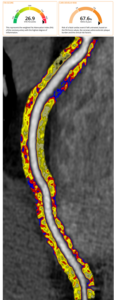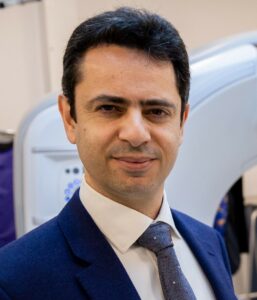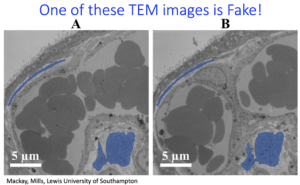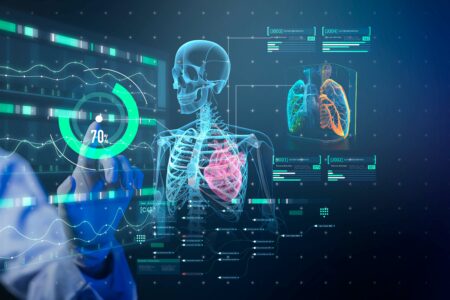Read case studies
Diverse Physiological Data Contributes to Creating Better, Fairer AI for Clinical Decision Support
Skein developed an integrated platform that collects data from patient-focused mobile app, wearable devices and subcutaneous sensors to inform AI-driven decision support for diagnostics and prognostics of neurological conditions. It is currently being tested for migraine and is planned to be piloted for people with Parkinson’s.
Incorporating heterogeneous data into the AI models, we were able to achieve more accurate and reliable predictions for the complex neurological conditions. Moreover, by validating the quality and representativeness of the data we provided better explainability of the AI algorithms, helping distinct groups of clinical decision makers to receive trustworthy predictions and ensure compliance with AI ethics regulations adjusted to their preferences, working pattern and goals.
While the system is still at the validation stage, it has indicated the potential to significantly cut costs and reduce pressure on the healthcare by allowing at-home monitoring and care, reduce the time and effort by clinicians and better serve the underrepresented groups of patients.

This project is part-funded by the European Commission under the grant agreement 101057524 https://cordis.europa.eu/project/id/101057524


AI Technology Can Be Used to Predict Heart Attacks from Routine Coronary Computed Tomography Angiograms
Cardiovascular disease is the #1 cause of death in the UK. Heart attacks happen when inflamed atherosclerotic plaques in our heart arteries break up, blocking blood flow to the heart. Finding these inflamed plaques would allow aggressive treatment of the right patients with low-cost drugs like statins, preventing heart attacks and saving lives.
A physiological discovery made in Oxford, revealed that the inflamed arteries trigger changes in the texture and composition of the fat surrounding them. The research team then developed an Artificial Intelligence method that measures these changes in the fat tissue around heart arteries by analysing images obtained from coronary computed tomography angiograms (CCTA), a test happening routinely in the NHS for the investigation of chest pain. The technology was able to predict fatal heart attacks at least 8 years in advance. This would allow doctors to direct timely deployment of treatments to the right patients, preventing heart attacks and saving lives.

The technology led to the Oxford Spinout company Caristo Diagnostics, to develop a CE-marked medical device called CaRi-Heart®. This cloud-based medical device is now deployed in the first NHS Trusts, allowing doctors to predict heart attacks and focus their attention to the right patients. CaRi-Heart® currently changes medical management in ~40% of the patients undergoing the test, transforming patient care.

Understanding the Basis of Reproductive Health through Machine-learning
If we can help the baby to grow well in the womb, this improves the health of the mother and the child. Our work explores structure and function relationships in the placenta and endometrium. Advances in imaging techniques are helping us to achieve this, but they generate complex data sets which are time-consuming to analyse. Using machine learning, we seek to analyse these images more quickly and to gain additional insights from this technology.
Machine learning algorithms can effectively recognise cell types and features in placental and endometrial tissue, allowing this data to be analysed much more quickly. We have also trained machine learning algorithms to make fake photorealistic electron microscope images of placental tissue. These fake images demonstrate that the trained algorithm ‘understands’ all the spatial relationships between anatomical structures within the tissue, including intracellular components. We aim to use the knowledge within the algorithm to explore how cells change in different physiological and pathological states.

Our work has demonstrated the potential of machine learning to speed up image analysis and provide new ways of extracting biologically exciting and clinically relevant data. In doing so, machine learning can help enhance the health of mothers and babies during pregnancy and across the life course.

Using AI to predict the risk of age-related health decline to provide personalised advice to enhance healthy ageing
AI can be used to develop biological ageing clocks based on the Muhdo epigenetic (DNA methylation), DNA and lifestyle data set (~15,000 individuals) combined with current published databases to predict age-related decline in health and to provide personalised guidance on lifestyle interventions including supplements and exercise to increase healthy lifespans and improve physical and cognitive performance across the life course.
Analysis of data in the Muhdo Health system, which included individual epigenomes, genotype, lifestyle and environmental tracking data, and comparison with peer-reviewed publications on healthy ageing and physical performance. The AI uses future prediction analytics to provide biological age, inflammation score and suggestions for lifestyle and nutritional interventions to improve healthy lifespans and enhance physical performance.
The AI analytics produced a range of correlations between healthy ageing and multiple areas of gene expression for athletic performance. Interestingly the analyses revealed that maximal athletic performance is statistically correlated with enhanced biological ageing and a decreased longevity profile. This was related to the mTOR pathway and inflammation markers analysed. The areas correlated with healthy ageing included:
- A diet high in lycopene from tomato based products decreased biological ageing on average by 3.8 years and increased methylation of the PPARGC1A gene. This is likely to reduce expression of the gene which is known to contribute to inflammation.
- Hydration maintains stable biological ageing, on average users that drank at least 2 litres of water per day exhibited more stable biological ageing.
- Low animal protein intake reduced inflammation scores and correlated with increased methylation of pro-inflammatory genes (PYCARD, PPARG, PPARGC1A, TLR4, TLR6). However, it led to decreased mTOR expression and decreased athletic performance.
The key areas related to increased athletic performance (self-reported) included:
- High animal protein or whey intake increased activity of the mTOR pathway and improved physical performance, but this was correlated with accelerated biological ageing.
- Increased quality of sleep improved athletic performance; this was also correlated with decreased biological ageing.
Muhdo health have the largest genomic database for athletes. We are continuing our academic research to better harness AI for healthy longevity with collaborators at King’s College London and the National University of Singapore.

AI Tools in Healthcare
The UK health system is under ever increasing pressure due to public health challenges such as a growing and ageing population coupled with an overburdened NHS. The ONS estimates that by 2045 4.3% of the country’s population (3.1 million people) will be aged 85 years and over. This significant demographic shift means that the health system needs to adapt to ensure its fit for the future by rapidly diagnosing disease and preventing ill health.
Artificial intelligence and machine-learning technologies are already being used to improve health outcomes. For example, data from patient-monitoring devices collecting physiological measurements such as heart rate, blood pressure and oxygen saturation is being used to personalise care; similarly, data on sleep quality can be used to suggest behavioural changes.
However, work in AI tends to happen in silos. Since healthcare is a vast field, encompassing numerous specialties and sub-specialties, AI developers tend to focus on specific areas of expertise, leading to the creation of specialised tools that only address specific medical conditions or processes. There is a need for cross-disciplinary collaboration to enhance our understanding of, and trust in, the results generated by AI technology which is often seen as a ‘black box’.
Physiological knowledge is essential to improving AI algorithms as it can provide insight into the underlying biological processes and mechanisms that drive various health conditions. This domain knowledge can help inform the development of AI algorithms and ensure that they accurately model the plausible physiological processes and reduce risk of identifying confounding factors. Further, physiologists can interpret and contextualise the data used to train AI models, ensuring that they contain plausible measurements and are representative against known standards for the target end users.
Our Call for Change
The limited inclusion of physiological evidence in the development of AI tools can lead to reduced trust, challenges with applicability and, at worst, to the identification of spurious correlations without sufficient physiological plausibility. Thus, to harness potential of AI in healthcare and ensure its safe and effective implementation we are calling for the following key actions.
- ACTION 1. Establish a Physiology & AI Framework to set improved guardrails for AI in health
The Society will establish a Physiology & AI framework setting out principles for physiologically plausible technologies. This will help establish guardrails around AI and health by identifying how to integrate physiological measurements and expertise into technology development and testing, prior to deployment in healthcare settings.
The framework will include three key elements:
- The development and adoption of a set of principles and success criteria that describe physiologically plausible technological applications, to help lift the lid on the ‘black box’ that is AI.
- A forum to regularly bring physiologists together with other key stakeholders, to achieve a shared understanding of physiological plausibility, opportunities and risks of AI tools in healthcare.
- A training programme for physiologists, developers and data scientists, to create a shared language and understanding to build physiologically plausible technology by design.
- ACTION 2. Ensure that research funding mechanisms prioritise physiologically plausible AI tools
Research funders should review the governance of funding mechanisms that concern the use of AI in healthcare. Where relevant, physiological plausibility should be included as a key decision factor in assessing the quality of grant proposals, and research teams should include physiological expertise
- ACTION 3. Embed physiological evidence in the regulatory approval of AI tools
The Medicines and Healthcare Products Regulatory Agency (MHRA), in partnership with other relevant regulators, should make physiological evidence and insight a foundation of their regulatory approval process for AI tools as medical devices.
Similarly, the National Health Service (NHS) and the National Institute for Health and Care Excellence (NICE) should update their assessment mechanisms for digital health technologies to include coverage of physiological evidence.
Through their centralised coordination function, the AI and Digital Regulations Service should ensure all collaborating regulatory organisations include physiological expertise and evidence in the assessment of relevant AI tools for healthcare.









